Big data can be a powerful resource for driving effective rate strategy. By harnessing the predictive capabilities of big data analysis we can power smarter revenue decisions for hotel owners. You may be thinking that big data is overkill for your hotel, perhaps too complicated or pricey to even consider. If there is variation in a customer’s willingness to buy within your market, a data-driven revenue management strategy will have a positive impact on your bottom-line.
Origins of big data
Big data comes from traditional sources like call centers, point-of-sale and financial transactions as well as digital sources like social channels and web applications. Unstructured data refers to data that is not easily interpreted by data models, like tweets and Facebook posts, or metadata. There is also multi-structured data that is derived from human interaction with online applications people typically use every day. Facebook data is a great example of multi-structured data. A user can follow groups, search for destinations, like, comment, and even make purchases. This is a unique blend of structured data, like financial transactions, and more contextual info like user search and like history.
Improved revenue with intelligent insights
At its core, revenue management attempts to strike a balance between a customer’s willingness to pay and the margin the hotel would like to make. Today, this is more of a moving target than ever before. Hotels often revise rates multiple times a day, working toward the concept of different rates on different days to different consumers, all for the same product. Big data analysis provides the insight to further streamline this process. Factors like weather, events, flights, and surrounding vacation rental inventory can sometimes affect demand and price elasticity. By analyzing these data sources, we can predict factors that impact your demand well in advance, not after the fact, as most hotels are still doing.
Consider another important factor, the overall value of a customer, which can vary greatly by segment. Market segmentation allows hotels to target and personalize rates to different customer segments, like corporate, groups, and leisure. Typically, revenue managers review length of stay, revenue per room and per client, no show ratios, cancellation percentages, etc. to predict trends in customer segments. Through the analysis of big data, patterns in consumer behavior reveal those more likely to be your optimal, high-value customers. You also gain insight into the most profitable channels to reach them.
What lies ahead
Speed and accessibility are two key areas for improvement in big data analysis. Due to the sheer volume of hotel data, tech providers will have to continue to make serious investments in data infrastructure as well as advances in machine learning algorithms. As for accessibility, consumers have come to expect a plug-and-play experience with everyday technology and revenue management systems should be no exception. Our industry is seeing a dramatic shift away from B2B-oriented platforms in favor of more user-friendly B2C experiences. It is now possible to manage nearly every aspect of your life via your mobile phone, why not manage your hotel’s revenue too. It’s 2016, afterall.
What are your thoughts about big data’s impact on our industry? Are you currently utilizing it to improve your rate strategy? Revenue managers, we want to hear from you in the comments.





